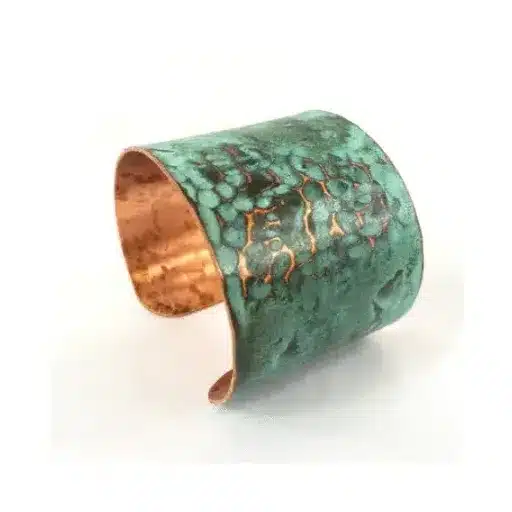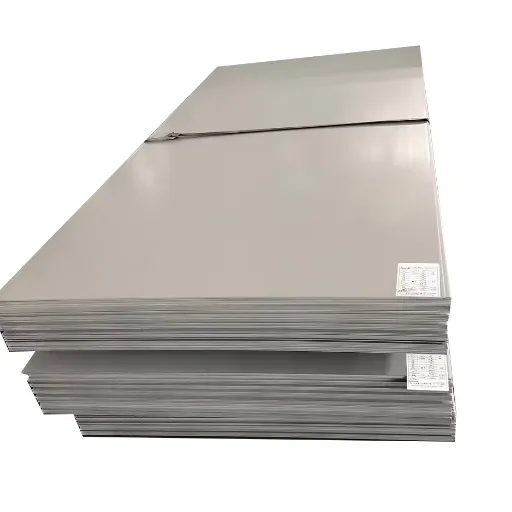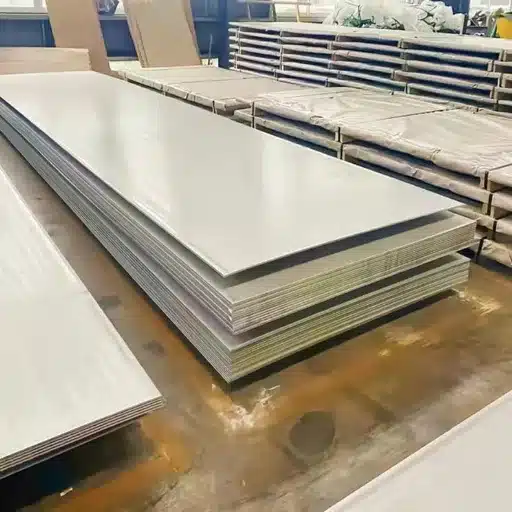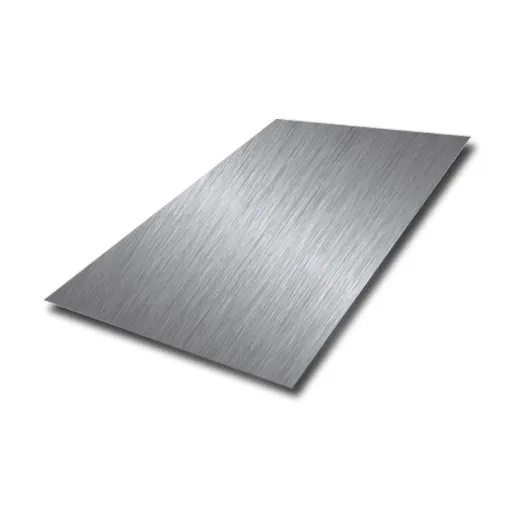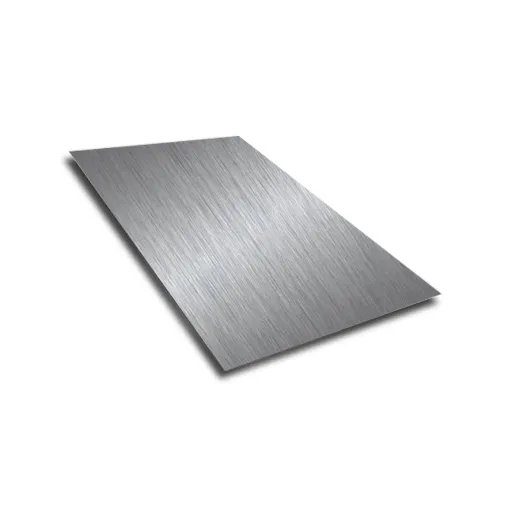A metallic magic play of lustrous beauty, with copper attaining the affinities found in architecture, design, and art for thousands of years. Being that versatile, it undergoes a wonderful metamorphosis in which patches of green and blue colors form into a patina. But how does this happen, and how long does the transformation from the original copper view of the object to an aged look truly take? Whether you want to keep copper as is or want to expedite the process of patina formation, a wholesome knowledge of the science behind gradual changes would aid you greatly in your decisions. Here, we will take a look at the copper patina process, what factors control the time involved, and why the whole affair is so practical yet beautiful.
Introduction to Copper Patina
What is Patina?
Patina is a natural thin film that has developed on the surface of various types of metals, especially copper, based on the exposure situation of air, moisture, and some chemical substances in the atmosphere. It is practically corrosion or oxidation that produces a thin layer on the metal in order to protect it underneath. In its early state, copper reflects bright and shiny whereas, over time, dull shades ensue-all the way until a typical bluish-green finish of aged copper is formed.
The patina layer has its own special significance apart from just beauty. This acts as a barrier in the promotion of the item’s corrosion. Unlike a rust that degrades the structure, patina actually stabilizes and protects copper, thereby enabling it to remain for decades outdoors. The survival is probably one of the reasons architects and designers consider copper their favorite building material-Wanting, rather, rusting with age is a re-enforcement.
Humidity, air quality, and chemical presence in the environment all influence the path of patination. For instance, salt-rich air in coastal areas tends to fasten the beauty formation of patinas here, while sharp air in the dry-assaulting land holds back the patination speed. The slow-going on evolves with beauty and function-the much sought after virtue in art, construction, and other fields where copper is prized for its eternal appeal.
Importance of Patina on Copper Roofs
The patina that develops on copper roofs are a great layer of protection for the underlying material. Formed over a period as the copper interacts with environmental elements, the patina becomes a natural barrier against corrosion and weathering. This is how copper roofs stand the test of time and are structurally sound even through harsh weather conditions.
From an aesthetic point of view, the patina on copper roofs is widely appreciated. The natural aging process lends a unique, soft, surface color of green and blue to copper roofs that greatly enhance the architectural character of buildings. Designers often opt for this beautiful greenish coat when looking for a design that embodies elegance and timeless charm.
Additionally, the patina ensures copper roofing remains sustainable. Copper is such a metal that it does not need any chemical treatment or furiously applied maintenance to maintain its patina; this prevents any future resource consumption. This is yet another environmentally friendly attribute that, combined with their durability and beauty, makes patina-coated copper roofs a worthy consideration for long-term projects.
Overview of the Copper Patina Process
The formation of a copper patina is the result of natural phenomena when the metal is exposed to the elements with time. Originating with the oxidation of the copper surface that reacts with the oxygen of the air to form copper oxide, the layer evolves further into copper carbonate, copper sulfate, or other similar compounds in the presence of moisture and other atmospheric pollutants, depending on the environmental conditions. This slow transformation results in the recognizable greenish or bluish-green color of the surface.
Humidity, quality of air, and closeness to saltwater environments are factors that may influence the fame and mode of the patina formation. For example, the presence of chloride ions would accelerate the formation in coastal areas. On the contrary, dry and clean air from other environments would slow down the patina process, speeding instead the darkening of the finish. While in the course of time, the patina layer serves as a barrier that protects the underlying metal from further corrosions and, in turn, drastically increases the working life of the copper material.
The process of patina formation is greatly sought after for the longevity and beauty it brings to architectural copper. Unlike any coating or treatment, the patina formation is a natural procedure requiring no chemicals and less upkeep, hence an environmentally friendly option. The uniqueness and its durability is just what makes patinated copper a choice material for roofs, facades, and other architectural features in both historical and contemporary designs.
Factors Influencing the Patina Process
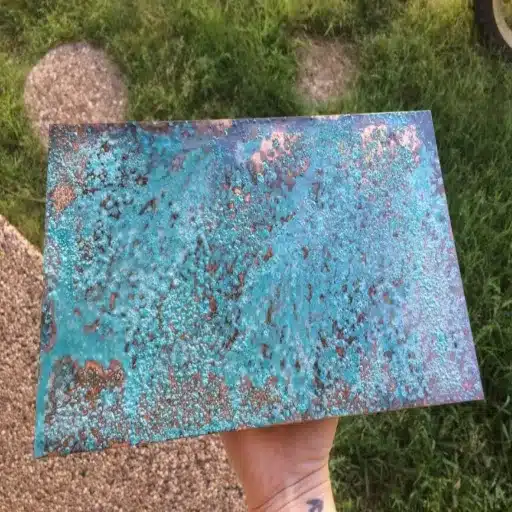
Environmental Conditions Affecting Copper Oxidation
The patina formation on copper greatly depends on the environmental conditions around it. These are factors affecting the color, namely humidity, temperature, air pollutants, and others. High-relative humidity induces surface oxidation of the patina due to the presence of considerable moisture that reacts with copper to form different compounds in the atmosphere. Also, faster patina development is observed in hot-climate areas while cooler climates produce slow development of patina because of slower chemical reaction rates.
Atmospheric pollutants found in urban and industrial areas generate chemical interactions to form copper patina. These interact with moisture and oxygen to form sulphates and other compounds on the copper surface. Salt deposition from coastal environments adds another variable into the mix, accelerating corrosion but also giving rise to alternate patina colors from chloride interaction.
Another important factor is exposure time and sheltering. Copper exposed to the open air and subjected to regular weathering will develop a patina differently compared to one found in partially sheltered settings or in interior environments. Such conditions might be used to predict the time needed for the development of patina and the way it looks in the end. This information is very useful to architects and designers in realizing the desired aesthetic and functional attributes of their projects.
Humidity and Temperature Effects
Humidity and temperature are the main players of copper patination, affecting its rate and appearance over time. The interaction of moisture with temperature governs the chemical reactions that form the defense patina layer. Some details are given below to illustrate the effects:
- High Humidity Environments: The greater the humidity, faster is the patina formation as more moisture is available to interact with atmospheric compounds, such as sulfur dioxide and carbon dioxide. This also tends to produce a more intense green patina as time passes.
- Low Humidity Conditions: Copper under an arid climate with low humidity patinates slowly. The lack of moisture hinders chemical activity, often producing an odd patina and uneven development.
- Temperature Fluctuations: Changes in temperature may speed up patination by virtue of the expansion and contraction of copper surfaces, which permit better interaction between the metal with air and moisture. Such abrupt temperature changes, for example, those in the desert, are capable of inducing sudden variations to color.
- Consistently High Temperatures: In tropical conditions, consistently high temperatures act as positive influences on chemical reactions yielding patination. A dense and colorful patina may be produced in less time by such conditions.
- Cold Weather Impact: The cold weather usually slows down the chemical reaction rate, which means slow patination. However, with the coexistence of high humidity and low temperature, the process will still carry out, although at a slower pace, and that will give a darker and duller patina.
Qualifying these elements leads right to the better control and prediction of patina development, which in turn will guide decision-making on projects wherein some specific visual and performance goals are sought for.
Pollution and Its Impact on Patina Formation
Pollution is, and it should be a factor to consider while developing or elaborating a theory of patination, particularly for those works executed in metals such as copper, bronze, or brass. Pollutants in the air chemically react with the surface layers of these materials. For instance, sulfur dioxide combines with moisture in the atmosphere to form sulfuric acid, which promotes the patination process as compounds are produced. The compounds, like copper sulfate, usually give an innately uneven or darker patina compared to the one which is created merely by weathering.
Because industrial emissions and vehicle exhaust enter an unfriendly mix in cities, patina formation occurs at an accelerated rate here. According to studies, monuments and buildings located in very polluted locales may experience surface chemistry changes in a matter of years on the aesthetic, as well as structural, grounds. On the other side of the coin, pollutant-induced corrosion and degradation could occur beneath the surface of patina after a relatively long term.
Mitigation of pollution impact on patina has been proposed, including periodic cleaning of the affected metals or stone, using coatings to protect the stone from pollutants, and improving air quality by imposing strict environmental laws. In conjunction, these measures will assure the best protection of cultural heritage and prolong the lifetime of outdoor metal sculptures. Understanding pollutant-patina interrelations is crucial in managing the visual and tangible integrity of materials exposed to dirty areas.
Types and Colors of Patina on Copper
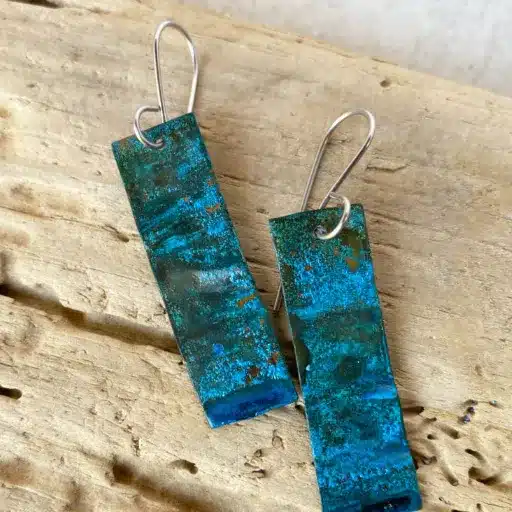
Common Color Variations of Copper Patina
Copper patina occurs when copper surfaces come into contact with environmental factors like moisture, oxygen, and pollutants. These chemical reactions represent a broad variation in color as copper oxidizes and compounds form on the surface. The most famous color for copper patina is a bright green called verdigris. This green coating of copper carbonate forms after long exposure to air and moisture and is well-known on rooftops, statues, and historical monuments, lending beauty and protection to these elements.
Before the green verdigris appears, copper may go through brown and black shades as early stages of patina form. Brown color originates with the first-stage oxidation as cuprous oxide. This brown coating continues changing into darker tones or even into deep black of brown, with exposure to oxygen and sulfur dioxide in polluted areas over time. The darker colors may well be found on industrial copper installations or in high-sulfur environments, thus highlighting how specific contaminants color the patina.
Other less commonly observed patina colors would be the blue and red shades as a consequence of salt deposits or very particular environmental conditions. A bluish patina may thus be characteristic of copper exposed to chloride-bearing environments such as sea-air environments, while reddish tones may arise from some variation in the oxidation processes or intentional exposure in manufacturing or artistic processes to certain chemicals. These particular colors impart a unique character to the copper surfaces, making a strong statement of the multicolored and highly variable nature of copper patina reacting with the environment. By understanding the underlying chemical processes and environmental factors, one can better manage and preserve copper installations across the globe.
Different Types of Patina and Their Characteristics
Patina, a surface layer that exists either naturally or by intervention, varies exceedingly in nature as per the formation process and its environmental conditions. Some of the more common types of patina with special features are:
- Natural Patina: Natural patina is formed over time through the effect of air, moisture, and other environmental elements and could take soft shades of green, brown, or blue. This particular patina is characterized by its gradual formation and is highly cherished in imparting an aged and genuine appearance to the copper surfaces.
- Chemical Patina: Such patina is brought upon the surface of copper or bronze by the application of chemical solutions to hasten oxidation for acquiring particular colors. Chemical patina colors are synonymous with artists and manufacturers who use it to get controlled shades and designs, deep greens, rich blues, to even black.
- Oxidative Patina: From exposure to oxygen for longer periods of time, temporary patinas offer darker brown or black hues. This sort of patina is irregularly put on to emphasize the classical metal aging process and is common to statues and roof tiles in architecture.
- Environmental Patina: As the name implies, this kind of patina is formed depending on the external environmental conditions. For example, coastal situations meeting a high degree of humidity and salt exposure allow greener or turquoise patinas, while urban environments filled with pollutants would give rise to darker or uneven patina texture.
- Customized Decorative Patina: The latest technologies and techniques allow for the designing of bespoke decorative patinas. These patinas can be personalized with colors or textures to meet a particular design specification in an artistic or architectural manner.
Knowing these patina types and attributes gives one a hint as to how copper and the like react with their environment over time, assisting in either preserving or appreciating features and qualities purposely bestowed upon patina in any installation, from sculptures to building components.
How to Identify the Patina Stages
It is usually done by noting changes in color, texture, and surface composition through time. The steps in patination usually follow some regular phases as the metal begins to react with moisture, oxygen, and pollutants from its immediate environment.
- Initial Oxidation: This first phase of patination appears right soon after exposure to air, as the metal surface begins to interact with oxygen, giving it a dull-brownish appearance. This seems to have been called an initial darkening from exposure to air.
- Development of Tarnish: The further oxidation conditions darken the surface layer to deeper browns and blacks. The effect depends on the humidity and pollutants in the surroundings.
- Formation of Green or Blue Patina: Extended exposure to elements such as rain, seawater, and pollutants from industrialized towns initiates an aging process in the material, generating a distinct green or blue patina. This very patina is generally recognized as the birthmark of the old copper, where compounds like copper carbonate or copper sulfate crystallize on the surface.
- Mature Patina: In this final stage, patina stabilizes sufficiently to form even and durable surface layers that are characteristically beautiful and may endure for decades while providing both aesthetic and protective benefits to the underlying material.
Further magnified visual inspection or laboratory tests can also give additional insight into patina composition and progress. Knowing the stages of development will help when undertaking preservation and maintenance work so that the patina can be respected according to artistic or architectural intent.
Accelerating the Patina Process
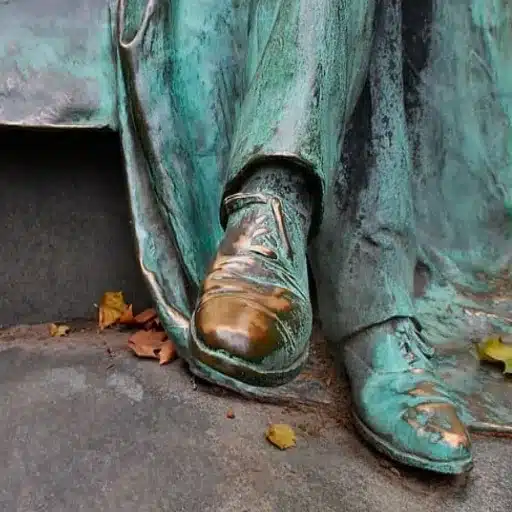
Methods to Speed Up Copper Oxidation
Chemical solutions and environment adjustments incite the development of natural weathering phenomena in copper patina formation. In one conventional household way, a solution of vinegar, salt, and water is prepared and applied by spraying or brushing onto the copper surface. Other than that, for moisture-assisted development of a patina layer, exposing the prepared copper surface to humid air yields better results.
The application of commercial patina solutions for accelerating metal oxidation is the other commonly used method. These chemicals provide reliable results and offer the convenience of altering the color and thickness of the patina with its use. Heat acceleration is yet another alternative, requiring precise application of heat to speed up chemical reaction rates on the copper surface while avoiding unintended damage.
The progress in formation and development can be recorded using a handheld spectrometer for real-time measurement data in the layer formation and composition. The perfect blend of old and new tools maintains the fine balance between authenticity and almost meticulous control in obtaining a more pleasing aesthetic outcome.
Using Chemicals vs. Natural Methods
It may be possible to control the color of patina formation with the use of chemicals. Natural methods rely on environmental exposure to color the patina and would be slower.
| Aspect | Chemicals | Natural |
|---|---|---|
| Time | Fast | Slow |
| Control | High | Low |
| Cost | Moderate | Low |
| Eco Impact | High | Low |
| Durability | Moderate | High |
| Appearance | Customizable | Authentic |
| Skill Needed | High | Low |
| Consistency | High | Variable |
Maintaining Desired Patina Appearance
The maintenance of a desired patina appearance requires regular upkeep and thought. In chemically induced patina, sealers or another protective finish must be applied right after to maintain the coloration and prevent further unwanted oxidation. Such coatings usually protect against moisture penetration, air pollutants, and UV light, all of which slowly modify or degrade the patina over time. Regular cleaning and washing with non-abrasive materials and mild cleaning solutions further help maintain the shine and prevent dirt contamination.
Natural patinas maintain themselves provided there are no drastic changes in their environmental exposure. Controlling humidity and temperature is thus conducive to preserving the natural look and keeping rain or saltwater off. However, natural patinas, being the gifts of nature, may require much less aggressive intervention and conservation compared to their chemically-induced counterparts. Instead, take the less invasive route with preservation, giving regular checks for discoloration or uneven wear.
The conservation of patinas has benefited from the introduction of new technologies working hand in hand with traditional means. For instance, moisture meters, corrosion rate sensors, and exotic coatings could all be useful in perfecting the conservation process. This would allow the patina to remain as accurate as possible concerning the desired look and to find a compromise between aesthetics and material longevity. Regular monitoring and quick adaptations protect the patina’s individual character as well as its artistic or historical value.
Maintenance Tips for Copper Roofs
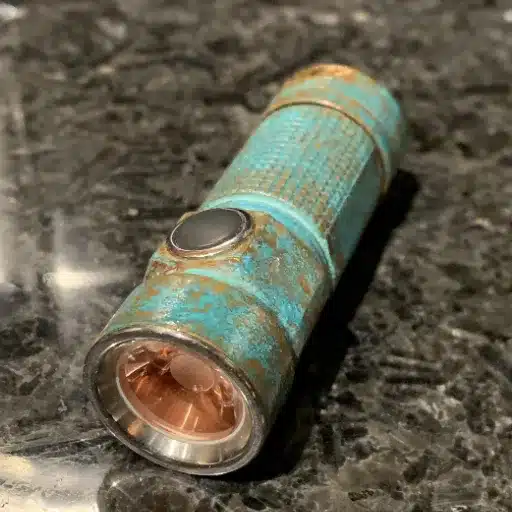
Preserving the Patina Finish
Maintenance of copper roofs with patina finishes requires a combination of measures in protection and periodic inspections. Among some of those measures, the coatings specifically manufactured for copper are applied. These coatings will form a barrier against excessive moisture, aggressive pollutants, and any harsh environmental dynamics that could otherwise prematurely modify or degrade that patina. Equally important is not subjecting the surface to abrasive cleaning, which removes the natural oxidized layer and thereby severely impairs both its functional and aesthetic qualities.
On the other hand, solutions equipped with state-of-the-art technology provide useful insights by recording technical parameters of concern, such as humidity, air quality, and temperature fluctuations. This allows timing of means of adjustment by either the homeowner or experts themselves avoiding happenings detrimental to its surface. Clean gutters and drainage help prevent water from pooling atop corrosion, which is even beyond what the patina can protect.
Most importantly, preservationists need to be consulted for major restoration applications. They will determine the state of the patina and suggest most appropriate ways to conserve the finish in situ for the long-term serviceability of the system. Through the combination of these solutions in conjunction with high-end advanced material science, we ensure that the patina will preserve its standing and further contribute in the artistic embellishment of copper roofing systems.
Cleaning and Care for Copper Surfaces
The beauty and longevity of copper surfaces are guaranteed with proper maintenance and cleaning. Over time, there is an accumulation of dirt and the formation of natural patina by constant exposure to environmental elements. The cleaning method of copper surfaces usually involves the use of a very gentle cloth or sponge with mild soap or detergent solution. Avoid harsh chemical cleaners as they may strip the surface or cause even more damages.
They will resist gentle treatment with lemon juice and salt mixed in equal proportion, applied lightly with circular motions and then washed thoroughly with water and wiped dry so as to avoid streaks. This cleaning is simply done at regular intervals, which vary on climate and on exposure conditions, thereby reducing the unwanted corrosion build-up on the metal while retaining its unique look.
Furthermore, it makes sense to occasionally go over the entire copper surface for signs of damage or excessive tarnish. Application of wax or specialized sealants may be considered in certain cases for protection against further tarnish or weathering, especially where much are exposed to the elements. However, the cleaning and care method will always interact with the natural copper patina in its own peculiar way; therefore any consideration of restoration should take into account the intended aesthetic outcome.
Long-Term Care for Copper Structures
Copper structures require continual maintenance and treatment as time goes by. I would recommend cleaning these surfaces on a regular basis so that dirt and grime do not accumulate, applying rather gentle means: an ultra-soft cloth and a gentle cleaning solution. Avoid abrasive materials and harsh chemicals at all costs, because they may cause microscopic corrosion of the surface and changes in the appearance brought on by the natural patina on copper developed with the passing of time. This patina is basically a thin protective layer that adds character to copper; therefore, preserving it helps to guarantee that the structure is both suitably durable and beautifully attractive.
When subjected to outside conditions, environmental variables or weather-hazards should be observed: humidity, precipitation, or pollution could all quicken tarnishing or weather. Application of a suitable protection coating onto the structure would further add to its protection against weathering, such as a clear lacquer or a specialized sealant. If the structure suffers any damage or corrosion, then fast action should be taken using correct restoration methods to stop further deterioration and save the structure from being damaged.
In the end, the care of copper structures is a fine art balancing between necessities for use and those of appearance. Accordingly, if you decide to let the metal express itself through aging or keep the original finish, every step in the preservation should be tied to your long-term goal for the structure. With periodic attention and care, a copper building can retain its beauty and remain a distinctive landscape for many years to come.
References
- Colorado State University: Patination with Non-Toxic Solutions (PDF)
This document explains the patina process on copper and copper alloys, detailing the natural and artificial oxidation processes. - Academia.edu: Brass Patina Techniques – An Experimental Approach
This paper discusses how environmental factors like soil and groundwater contribute to the formation of patina on copper surfaces. - Architect of the Capitol: Continuous Care of the U.S. Capitol Roof
This source mentions that while copper turns brown relatively quickly in rain, it can take 20 to 25 years for the natural weathering process to develop a full green patina.
Frequently Asked Questions (FAQ)
Q: How long does it take for copper to develop patina?
A: It depends largely on local environmental factors. In general, a copper surface may be patinated within months or many years, depending upon the requirements for moisture, sulfur compounds, or the specific patina being formed. For example, patina is obtained faster on copper objects traded in high sulfur or high moisture areas.
Q: What is the actual process behind the formation of copper patina?
A: A patina is formed by chemical reactions, the predominant being oxidation. It is formed when the copper surface reacts with oxygen, moisture, or carbon dioxide to form various compounds of copper, mainly copper oxides and copper carbonates. The natural patina is normally brownish at first and then changes to green.
Q: Can vinegar and salt quicken the patina effect on copper?
A: Yes, the mixture of vinegar and salt may be used to hasten the oxidation process on copper. This treatment, among other things, could expedite discolorations with the green patina that are born on copper when exposed, and thus the natural weathering that offers visual appeal is hastened.
Q: How do harsh chemicals affect the copper patina?
A: Damage and prevention of some harsh chemicals on patina do occur. Chemicals can interfere with copper’s reaction to atmospheric factors, which can cause inconsistent patination and compromise the copper object’s beauty.
Q: What determines the color of copper patina?
A: Numerous factors determine the color of copper patina. Among these factors are the chemical nature of the patina, the copper metal beneath it, and various environmental elements. For example, chloride ions originating from sea spray or acidic pollution may give a bluish-green patina, whereas alkaline media originating from a soil rich in basic copper carbonate will turn the copper to a brighter green.
Q: How long does it take for copper roof patina to set in?
A: The duration of the life of copper roofing tiles and the time it takes for copper roof patina formation can vary widely, often taking 5 to 20 years to achieve the desired color. Several other factors contribute: exposure to moisture or the environment, and the presence of sulfur in the air.
Q: Is it possible to protect the copper that lies underneath while the patina develops?
A: Yes, options exist for protecting the underlying copper while allowing the patina to form. For example, using a soft cloth to clean the surface regularly helps keep the appearance intact without interfering too much with the natural oxidation process of patina formation. The key is to stay away from heavy-duty cleaning agents, which can ruin the patina altogether.
Q: How does weather affect patina formation on copper?
A: Weather plays an important role in the processes of patination on copper. Factors such as humidity, temperature…how much rain falls in a day-the whole thing-outside with the Ez, can speed up or slow the chemical reactions occurring, thus speeding up or slowing down the growth of patina. For instance, in a highly humid and rainy place, the oxidation and patina formation become faster.
Q: Can patina develop on copper jewelry with the passage of time?
A: Yes, copper jewelry can indeed develop a patina with time. It happens due to the exposure to air, moisture, and skin oils. This results in brown patina, or if conditions favor, the unattractive or rather attractive green patina. Some people enjoy this natural process of aging, while some cleans their jewelry to bring shine back.

